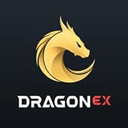
Review on Dash by Nojim Olugbenga Lawal

Dash Cryptocurrency Governance and Consensus
Dash Consensus and Governance
Dash is inherited from the original blockchain network, it is an open-source cryptocurrency, and an altcoin forked from the Bitcoin protocol. Proof of is one important way miners secure the blockchain. Dash users has a secondary network to facilitate some unique functions on Dash like InstantSend, DAO, and PrivateSend. One essential added feature of Dash is the masternode network
While the Proof-of-Work is applied to secure the blockchain through miners for regular transactions, Dash also uses Proof-of-Service done by masternodes to keep its unique functionalities to improve the anonymity and instant transaction features[1]. Masternodes are paid by the block reward. In principle, 45% of the block reward goes to the masternodes, and 45% is paid to miners. The remaining 10% will go to the treasury budget. In practice, however, the block reward is paid out to miners and masternodes, each with 50%. But, every 16,616 blocks (approximately 30.29 days), a superblock is created with the entire 10% payout to the treasury budget. The Treasury budget is aimed at funding the Decentralized Autonomous Organization (DAO) on Dash. Between the superblocks, users can make a proposal to the network which will then be reviewed by the community. If the proposal receives approval votes from at least 10% of the masternodes, then the requested amount will be paid out in the next superblock.
Dash is becoming increasingly popular in the cryptocurrency world today. As Dash is a fork from Bitcoin, it not only retains the excellent properties of the Bitcoin but is also enhanced in many ways.
Pros
- 1. Ensures users their financial and transaction privacy. 2. Transactions are much faster with InstantSend technology 3. Much more decentralized than other coin. 4. Transaction fees which are is low in comparison to credit cards or even banks
Cons
- 1. Doubt about the legitimacy of Dash’s decentralized nature. 2. Lacks a significant number of users or merchants.
New products
Comments (4)

May 21, 2020
As a fork of bitcoin, dash is almost performing its function, that is you can use dash to transfer value, but unlike bitcoin that is using only pow mechanism, dash is using pow and pos mechanism.

May 21, 2020
Dash is an open source cryptocurrency and an altocoin forked from Bitcoin protocol. It is becoming so popular in the cryptocurrency world today as it is a fork from bitcoin. Dash does not only retain the excellent properties of the Bitcoin but also enhanced in many ways

May 20, 2020
Dash has gained popularity because it is secured and it has high transaction speed than bitcoin. This can be achieved with the help unique that involve masternodes. It build on blockchain technology that Bitcoin is using.

May 20, 2020
Dash cryptocurrency was developed and launched in 2014 by Evan Duffield. It went through several name changes and iterations in the early years, including initial launch as XCoin, and later Darkcoin, but had stabilized as “Dash” by March 2015.












